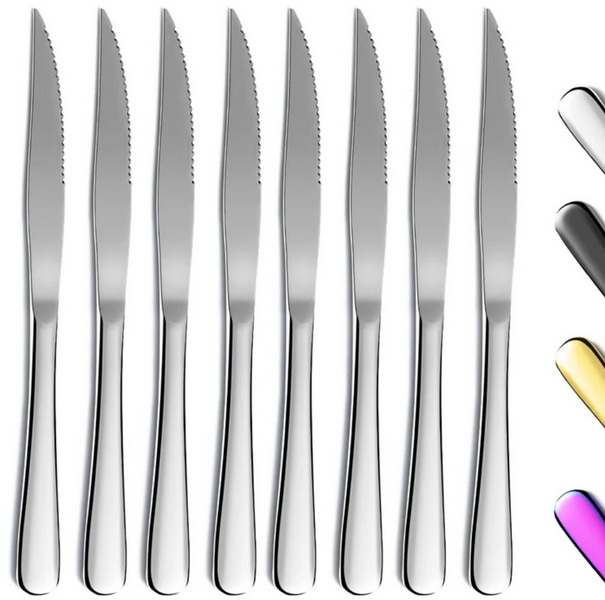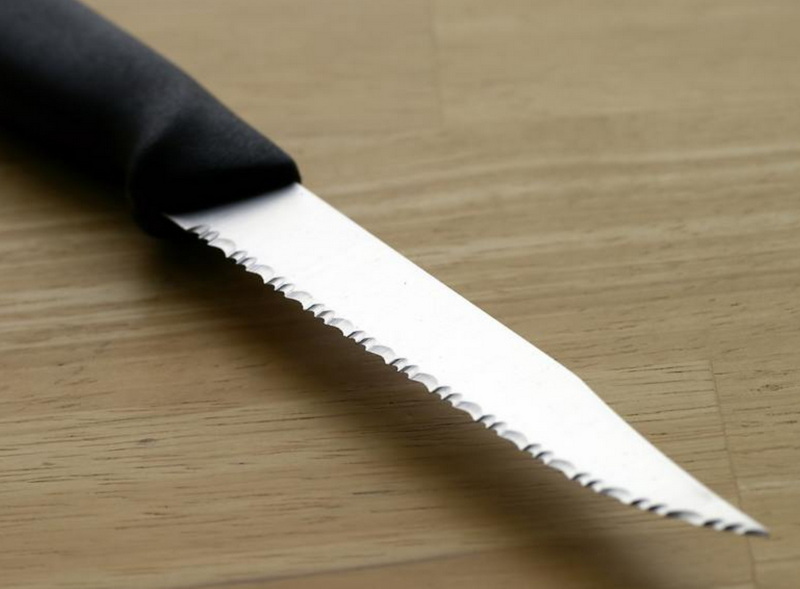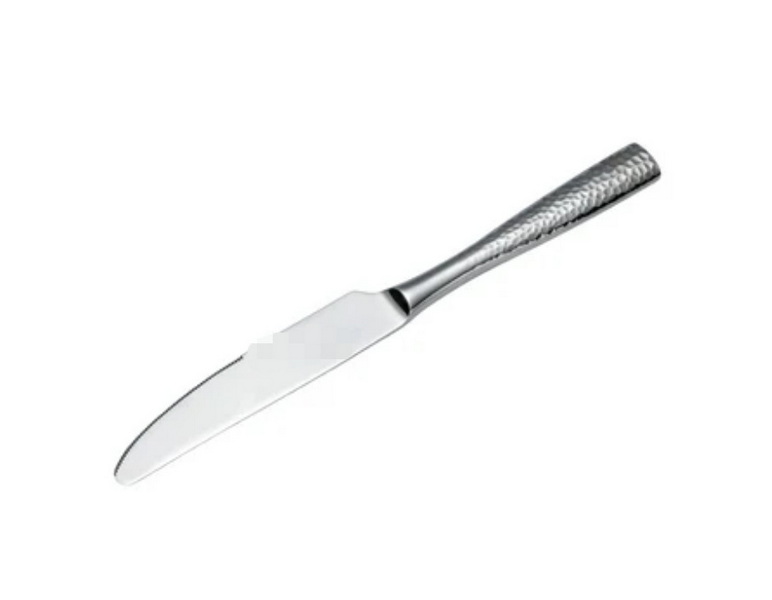- All
- Product Name
- Product Keyword
- Product Model
- Product Summary
- Product Description
- Multi Field Search
Views: 222 Author: Ann Publish Time: 2025-10-29 Origin: Site











Content Menu
● Knife Type and Blade Geometry
● Material Quality and Corrosion Resistance
● Edge Retention and Sharpening
● Safety, Sanitation, and Compliance
● Packaging, Inventory, and Logistics
● Cost, Value, and Total Cost of Ownership
● OEM Capabilities and Collaboration
● Knife Block and Presentation Synergy (Optional Add-On)
● Care and Maintenance Guidance for Bulk Buyers
● Sample Specification Sheet (Illustrative)
● Quality Assurance and Certification
● Regional Considerations and Market Adaptation
● Sustainability and Responsible Manufacturing
● FAQ
>> Q1: What blade material is best for restaurant steak knives?
>> Q2: How often should steak knives be sharpened in a busy restaurant?
>> Q3: What is the ideal knife handle material for high-volume kitchens?
>> Q4: What packaging is best for bulk steak knife orders?
>> Q5: What certifications should I look for when sourcing steak knives?
When a restaurant decides to equip its kitchen and front-of-house with steak knives, the choice is more than a simple purchase. Bulk orders influence kitchen efficiency, guest satisfaction, and branding. For OEM manufacturers in China, this is an opportunity to showcase material science, ergonomic design, and reliable supply chains. This guide walks you through the essential factors to consider when sourcing steak knives in bulk, with a focus on compatibility with professional kitchens, maintenance, packaging, and OEM capabilities. Throughout, the core keyword and product focus remain on steak knives, while ensuring a seamless, human-centered reading experience.

- The steak knife category encompasses various blade profiles, materials, and edge configurations. For bulk orders, you should prioritize blades that resist corrosion, retain sharpness, and withstand frequent use in high-volume settings.
- Common blade materials include high-carbon stainless steels and alloy steels that balance hardness and toughness. Blade geometry matters: a thinner blade can slice with ease, while a thicker blade adds strength for tougher cuts.
- Edge styles vary from plain bevel to serrated and grant different performance in meat textures. For restaurant use, serrated edges often provide reliability across different meat conditions, while non-serrated edges can excel with proper sharpening and maintenance.
- Stainless steel grades such as 420/440A/440C, 5Cr15MoV, and other food-grade alloys are popular choices. Higher hardness (measured on the Rockwell scale) generally improves edge retention but can affect toughness.
- Handle materials should complement blade performance. Common options include pakkawood, G10, polypropylene, and steel. Ergonomics, grip texture, and moisture resistance contribute to long service life in busy kitchens.
- For OEM manufacturers, consistent heat treatment, surface finishing, and quality control are critical. Uniform blade hardness and absence of waviness or micro-defects ensure reliable performance across thousands of units.
- A comfortable balance point reduces hand fatigue during long service shifts. For restaurant settings, knife weight should feel natural in a chef's hand, with a well-contoured handle that resists slippage.
- Ambidextrous or right-hand-specific designs may be relevant depending on the kitchen team. In OEM programs, standardized tooling and tolerances ensure uniform feel across batches.
- Physical attributes such as blade thickness, tang length, and bolster shape contribute to controllability and safety, especially when training junior staff.
- The frequency and method of sharpening are practical concerns for bulk buyers. Serrated steaks knives require different maintenance compared to plain-edged knives.
- Consider suppliers that offer compatible sharpening tools and guidance for restaurant staff. Some OEM partners provide built-in blade maintenance programs or convenient consumer care manuals.
- A well-planned maintenance protocol extends knife life and reduces total cost of ownership for the restaurant.
- Food-grade materials and non-toxic finishes are mandatory for knives used in professional kitchens.
- Seamless construction, minimal crevices, and ease of cleaning are important for sanitation. Some models feature full tangs and smooth handles to reduce bacterial harboring.
- In many regions, knives must meet local safety and labeling standards. When partnering with an OEM, verify that the product documentation, packaging, and labeling comply with end-market requirements.
- Bulk orders require packaging that protects knives during transit and supports efficient storage in kitchens. Options include blade covers, corrugated cartons, and tray inserts.
- Clear labeling, SKU consistency, and tamper-evident packaging help streamline receiving processes for distributors and restaurant chains.
- Logistics considerations include lead times, minimum order quantities, and stability of supply. A reliable OEM partner can offer staged shipments and domestically stored inventory to mitigate stockouts.
- Unit price is only part of the value equation. Consider edge life, return on investment through reduced replacement cycles, and the cost of sharpening and maintenance.
- Volume discounts, standardized packaging, and consistent quality across lots contribute to predictable budgets for hotel, restaurant, and catering operations.
- Evaluate total cost of ownership (TCO) rather than purchase price alone. A well-calibrated program with a trusted OEM partner reduces downtime and staff frustration.

- As a China-based factory offering OEM services, your strengths include design flexibility, material selection, customization of blade geometry, handle aesthetics, and branding.
- Early collaboration helps align product specifications with end-market needs. Providing CAD models, material data sheets, and finish samples speeds up approvals.
- A transparent quality assurance process, including inline inspections and final audits, builds confidence with international brands, wholesalers, and distributors.
- Restaurants often pair steak knives with appropriate knife blocks or storage systems. If your OEM program includes knife blocks, ensure compatibility with the chosen knife geometry and tempering requirements.
- Packaging design that highlights brand identity and care instructions reinforces value perceived by buyers and end-users.
- Provide a practical care plan that restaurants can implement. Include drying practices, hand-washing recommendations, and storage tips to maintain performance.
- Offer training materials for staff on knife handling safety, sharpening basics, and safe disposal of damaged blades.
- Consider after-sales support as part of the OEM package, including replacement policies and warranty terms.
- Blade material: high-carbon stainless steel, X% chromium, Y% carbon content
- Edge: serrated/plain, preferred bevel angle
- Handle: material choice, texture, and color options
- Finish: satin, mirror, or stone-washed
- Overall length, blade length, thickness, tang type, and balance point
- Packaging: inner tray, outer carton, SKU, and recommended cleaning instructions
- Highlight testing regimes such as hardness checks, corrosion resistance tests, and edge retention measurements.
- Documentation should include material certificates, lot traceability, and compliance statements suitable for international buyers.
- A well-documented QA process reduces risk for multi-brand deployments and cross-border sales.
- Different markets may prefer particular blade shapes, handle designs, or branding approaches. An OEM partner can adapt geometry and finishes to regional preferences while maintaining global consistency.
- Language, labeling, and packaging artwork should be prepared in the target market's languages and color schemes to accelerate market entry.
- Emphasize responsible sourcing of raw materials, waste reduction, and energy-efficient production processes.
- Provide transparency about factory certifications and supplier audits to reassure restaurant buyers and distributors.
Selecting steak knives for restaurants in bulk requires balancing performance, durability, safety, and total cost of ownership with reliable OEM capabilities. A Chinese kitchen knife factory that offers tailored materials, ergonomic designs, consistent production, robust QA, and branding options can help international brands deliver a high-quality product experience across markets. By combining blade technology, handle ergonomics, maintenance guidance, and smart packaging, suppliers can meet the demanding needs of restaurants while building lasting partnerships with brand owners and distributors.

A1: High-carbon stainless steel blends offer a balance of sharpness, edge retention, and corrosion resistance suitable for restaurant environments.
A2: Regular maintenance varies, but many restaurants sharpen weekly or biweekly, supplemented by interim touch-ups as needed based on usage and meat density.
A3: Materials such as G10 or high-quality polymer handles provide durability, moisture resistance, and good grip in humid kitchen conditions.
A4: Protective inner trays, clear outer cartons, and clearly labeled SKUs help with fast stocking and inventory control.
A5: Look for food-grade material certifications, safety labeling compliance, and traceability documentation from the manufacturer.
The Ultimate Professional Knives for Halal Butchery in Middle Eastern Kitchens
Chef Knife Size Guide: Choosing Between 6″, 8″, 10″, And 12″
Custom Knife Handles: How To Design A Chef Knife That Fits Your Hand Perfectly
Chef Knife Surface Treatments Guide: From Polished Migaki To Damascus Patterns
Inside Our Professional Knife Sample Room: Quality You Can See
Universal Knife Block Buying Guide: Modern Acrylic & ABS Knife Holders for Professional Kitchens
Universal Knife Block: The Complete Guide To Modern, Hygienic Knife Storage
The Complete Guide To Red Handle Knife Sets: Style Meets Functionality in The Kitchen
Professional Knives for Halal Butchery And Middle Eastern Cuisine